Rome – Day 2 – Pompeii & Naples – Something old, something new (sort of)
Thursday, 21-Apr-2016
Tags: Travel
Being on the Piazza del Risorgimento, it was easy to take a taxi to Termini train station, even at 6:30 am. We previously bought tickets for the high-speed train to Napoli Central, taking about an hour and 10 minutes. We then headed downstairs to the Circumvesuviana train that stops in Pompeii on the way to Sorrento. The train ran about every half hour (it was late that morning by a bit), and took about 50 minutes with a lot of stops. We were at Pompeii by a little after 10 am.
The eruption of Mount Vesuvius in 79 AD was a catastrophic eruption. Pompeii was buried in volcanic ash and pumice, its inhabitants buried. For various logistic and historical reasons, the site was lost for about 1,500 years, so when the city was rediscovered and excavated (still going on), it was a historical treasure. These artifacts provide an extraordinarily detailed insight into the life of a city during the Pax Romana.
The area is quite large, and even with a map, it was hard to follow the path we planned. In addition, many areas are closed for more excavation and restoration. Places we saw and walked to: the baths outside the wall, the Porta Marina gate (the entrance into the walled city), the Basilica (hall of justice, whose floor plan was later used for churches, hence the name Basilica for churches), the Forum, the thermal baths, food stalls, House of the Fawn, an aqueduct arch, the theatre, and the gladiator barracks. Along the way, we walked the well-designed streets of a classic Roman city.
Porta Marina gate.
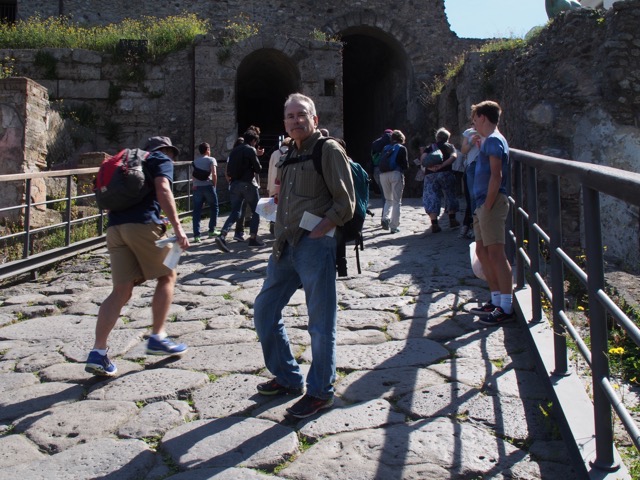
Roman street. Stepping stones (3 means a two way street) across the road, kept the feet dry.
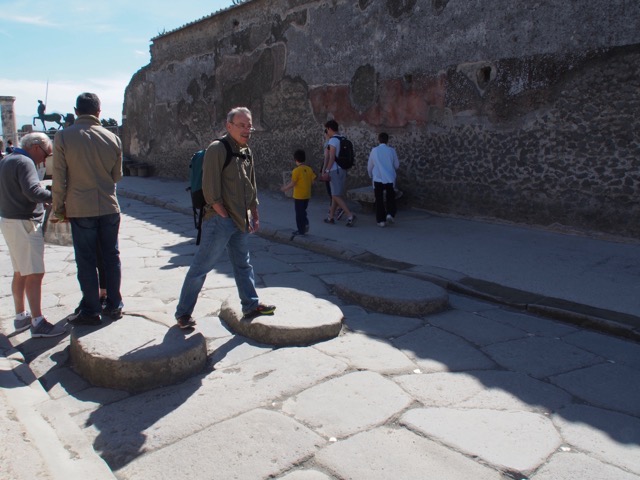
Basilica.
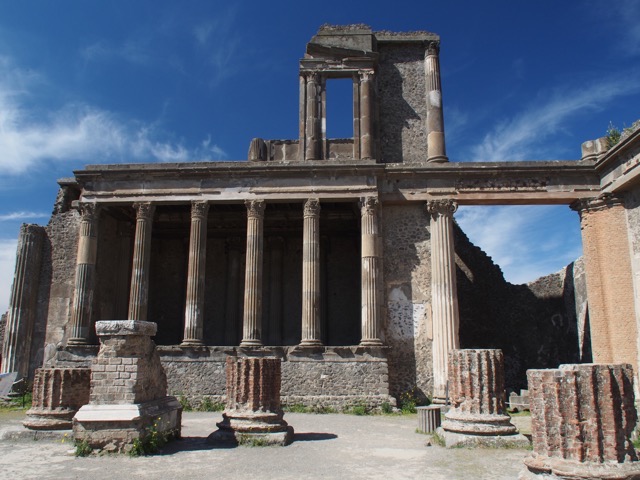
The Temple of Jupiter at the back of the Forum, with Mt. Vesuvius in the background.
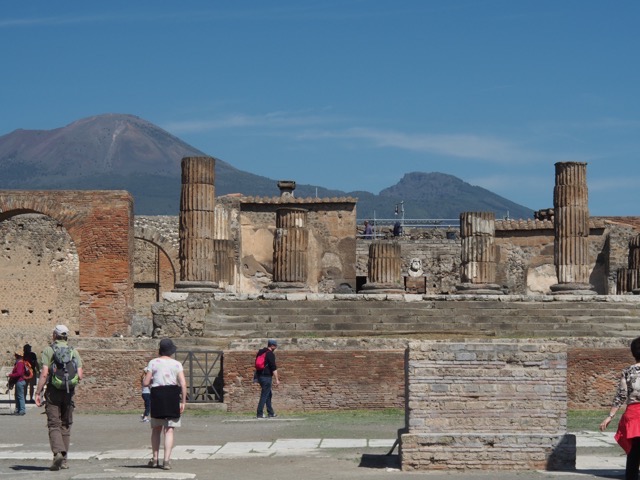
Baths of the Forum: the tepidarium. Clients would undress and warm up here, See the lockers between the statues.
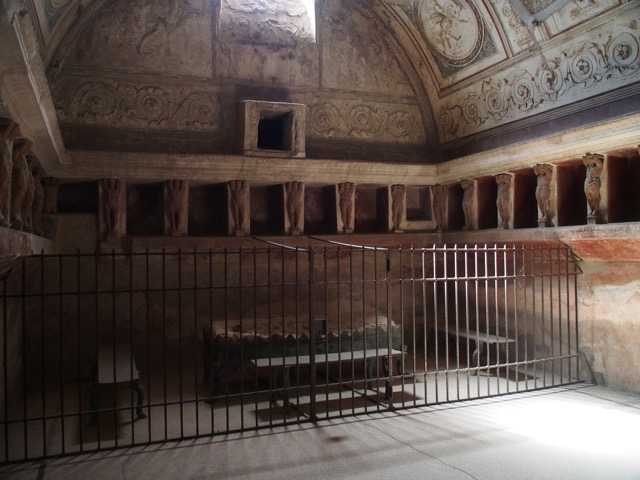
Baths of the Forum: the caldarium — stream room. The double floor was heated from below. This fountain spouted water onto the hot floor, creating stream. To keep condensation from dripping, fluting was added to the walls. Great design.
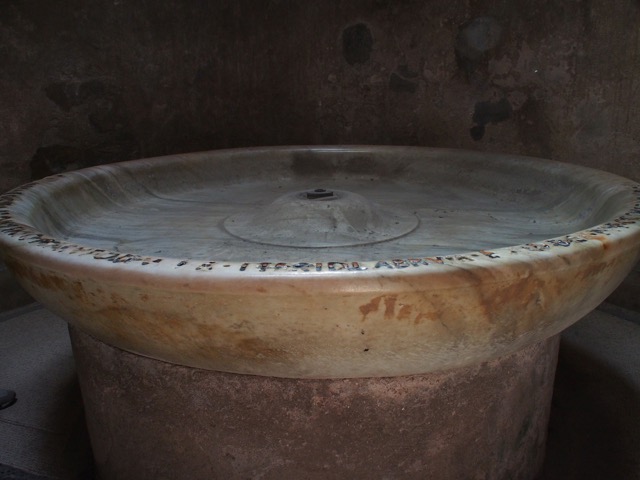
“Fast-food Joint” — Lots of clever ways to keep hot food hot and wine cold.
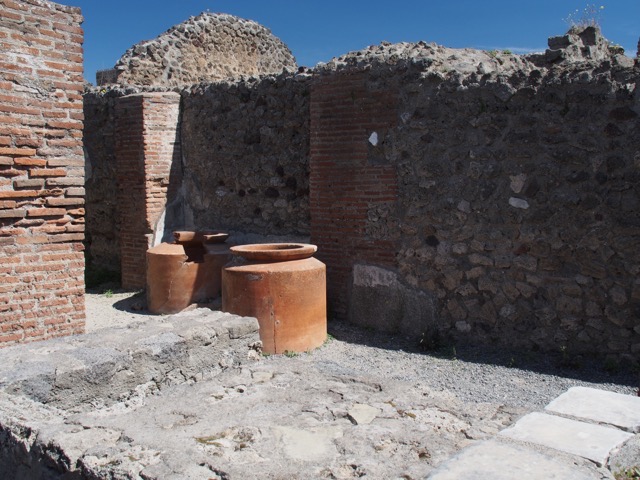
Aqueduct Arch, originally covered in marble, to help create water pressure for the neighborhood.
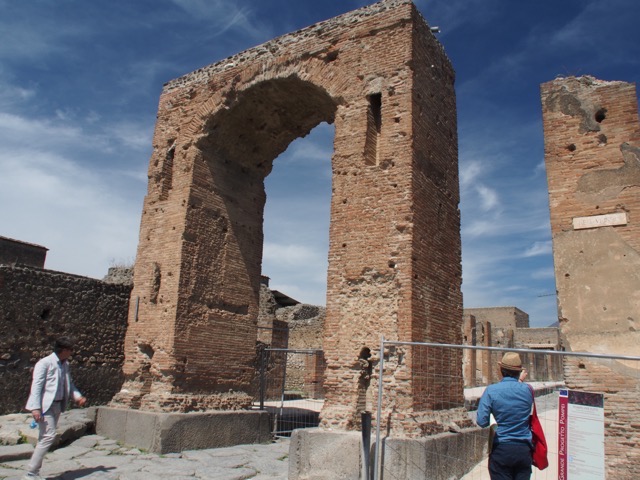
Floor mosaic.
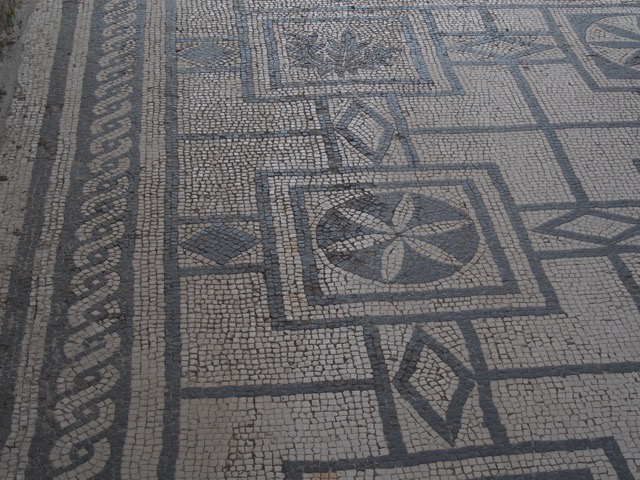
The theatre. Originally a Greek theater, the birthplace of the Greek port here in 470 BCE. During Roman times, the theatre sat 5,000 people.
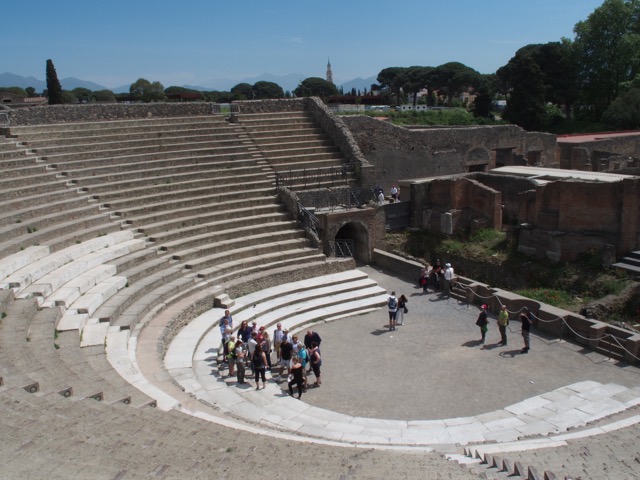
Gladiator barracks.

Around 12:30 we had our picnic lunch and headed back to Naples on the 1:09 pm train.
From the train station, we took the metro to Piazza Dante on Via Toledo, had some coffee, and walked north to the Archeological Museum to meet the tour guide we had hired for a three hour tour. Because of time constraints, we did not visit the Museum, which contains many artifacts from Pompeii (in fact, a number of the mosaics and statues we saw in Pompeii were reproductions, with the originals in the museum).
We had planned to do a “Rick Steves Shared Tour” by Mondo Guides, but it required 6 people to sign up and no one else signed up. However we worked out a private tour (not on their normal list) for a 3 hour tour. Our guide, Vincenzo (about our son’s age), was very personable and was well-versed in Napoli culture, history, and architecture. By the way, Naples/Napoli is really Neapolis - it was the second ancient version of the city built in that area, hence "New City".
We headed back down Via Toledo, back to Piazza Dante, and walked east into the old city via the Porta d’Alba gate.
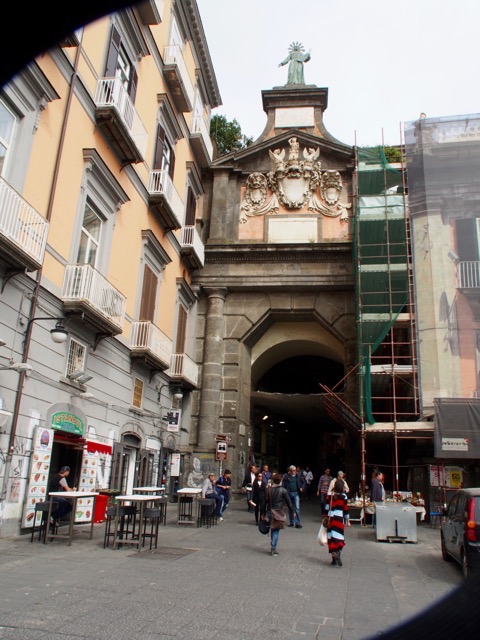
Vincenzo was able to personalize our tour. We spent a lot of time walking the pedestrian streets, learning about history and culture of the people of Naples, visiting some churches and hearing about their origins and architecture, walked down “nativity street” (San Gregorio Armeno) where people can buy all kinds of figurines for their nativity scenes (movie stars, soccer stars, popes, etc). We saw two well-known statues — the Nile God and Pucinella (like our Punch from Punch and Judy). As part of the walk, we walked along Spaccanapoli, the straight and narrow main street that traverses the old, historic center of the city of Naples, Italy. The name is a popular usage and means, literally, "Naples splitter”. The street actually has many names along the way.
We visited the San Lorenzo Maggiore Church, and having mentioned I had read about underground Naples — excavations down through the early Christian, Roman, and Greek layers, Vincenzo took us to the underground below the San Lorenzo Church. It was really fascinating, just the three of us in this underground area.
We learned some interesting stories about Saint Gennaro, the patron saint of Naples. We also visited the Duomo, where there is a chapel dedicated to him, owned by the City of Naples and not the Church.
Old city.
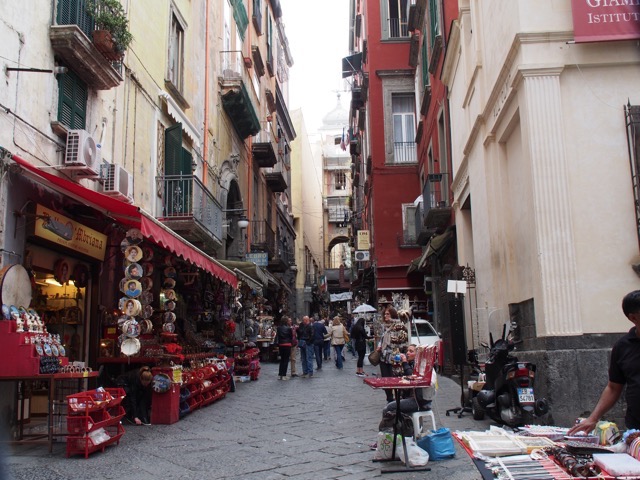
We were able to visit the underground excavations next to S. Lorenzo Maggiore church. Vincenzo is on the left :)
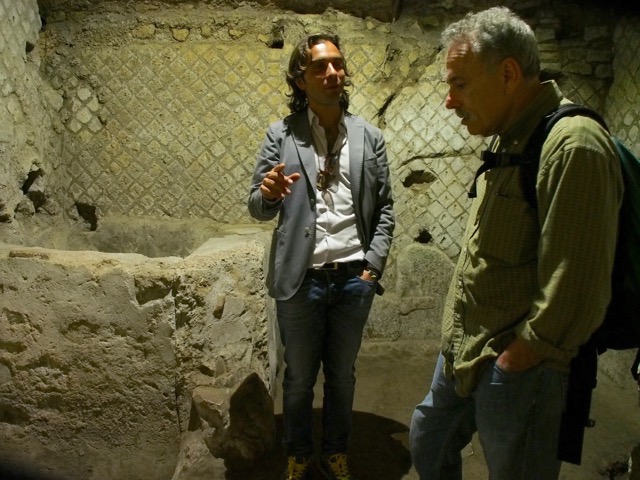
History revealed.
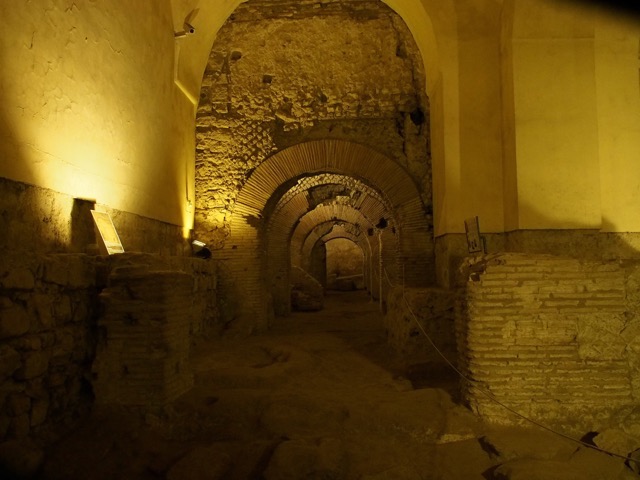
“Nativity Street” People put all kinds of figurines in their nativity scenes 😃 (including a naked Prince Harry at the top just to the right of center).
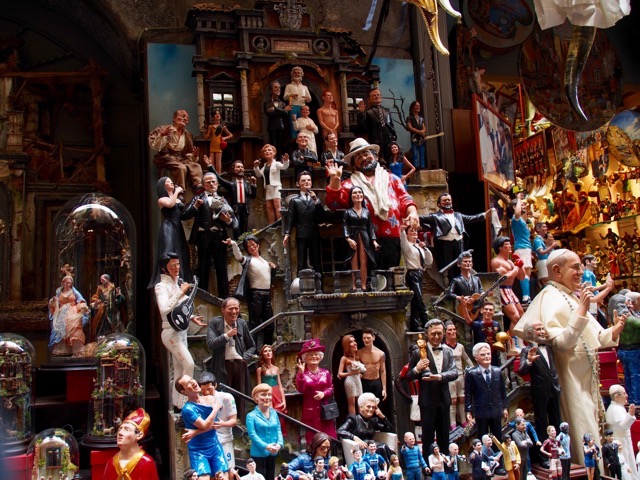
Statue of the Nile. A reminder of the multi-ethnic makeup of Greek Neapolis. The statue was likely erected in the then Roman port city by Alexandrian merchants. It was recovered, headless, in 1476, and was nicknamed "Corpo di Napoli” (Body of Naples). It was placed upon a pedestal in 1657, and later than century a bearded head was sculpted.
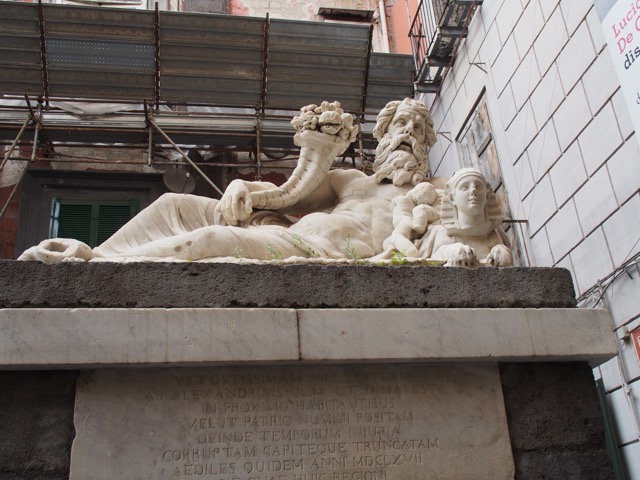
Pucinella.
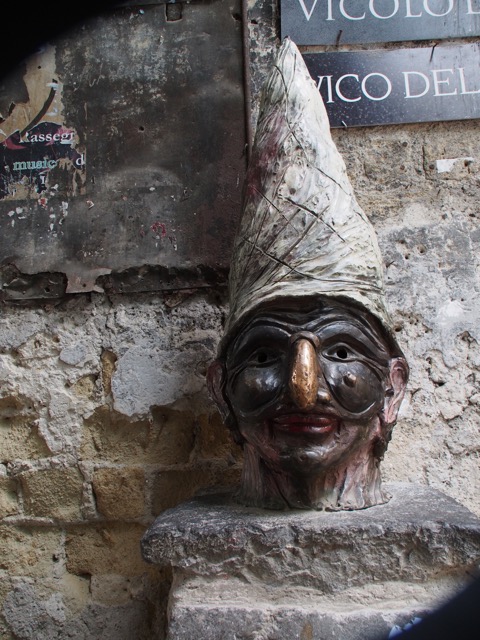
We parted company after visiting a couple more churches, and headed back to close-by Piazza Dante, back through the arch, and ate some genuine Napoli pizza (so good) at Antica Pizzeria Port d’Alba.
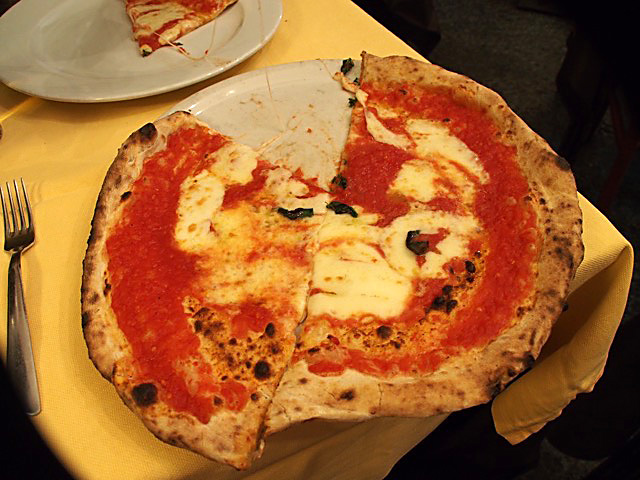
We took the 7:30 pm high-speed train back to Rome, and then the metro to Ottovania and a short walk to get back home — a long day with about 10 miles of walking.
Links:
--
Larry and Eileen Samberg




















